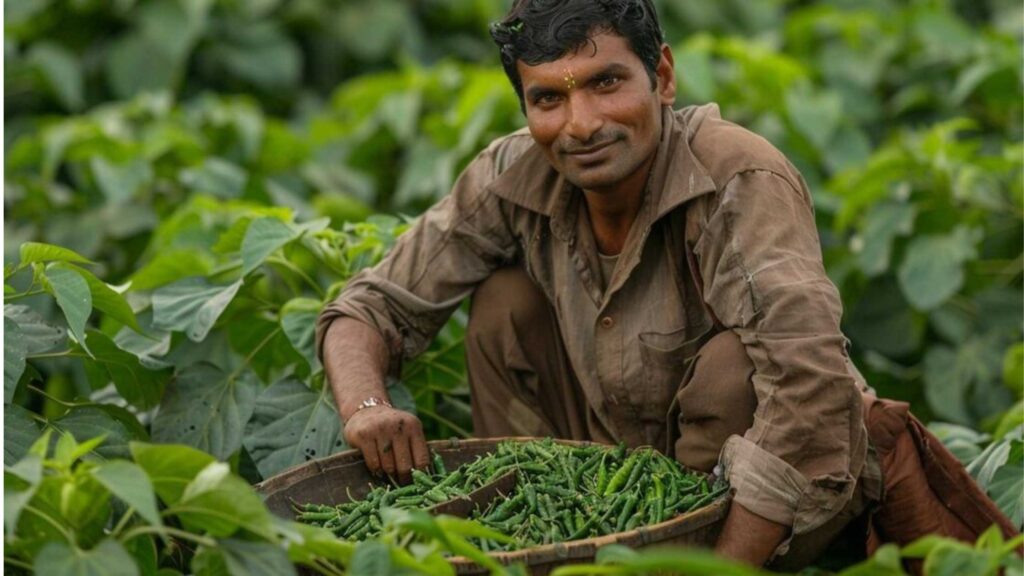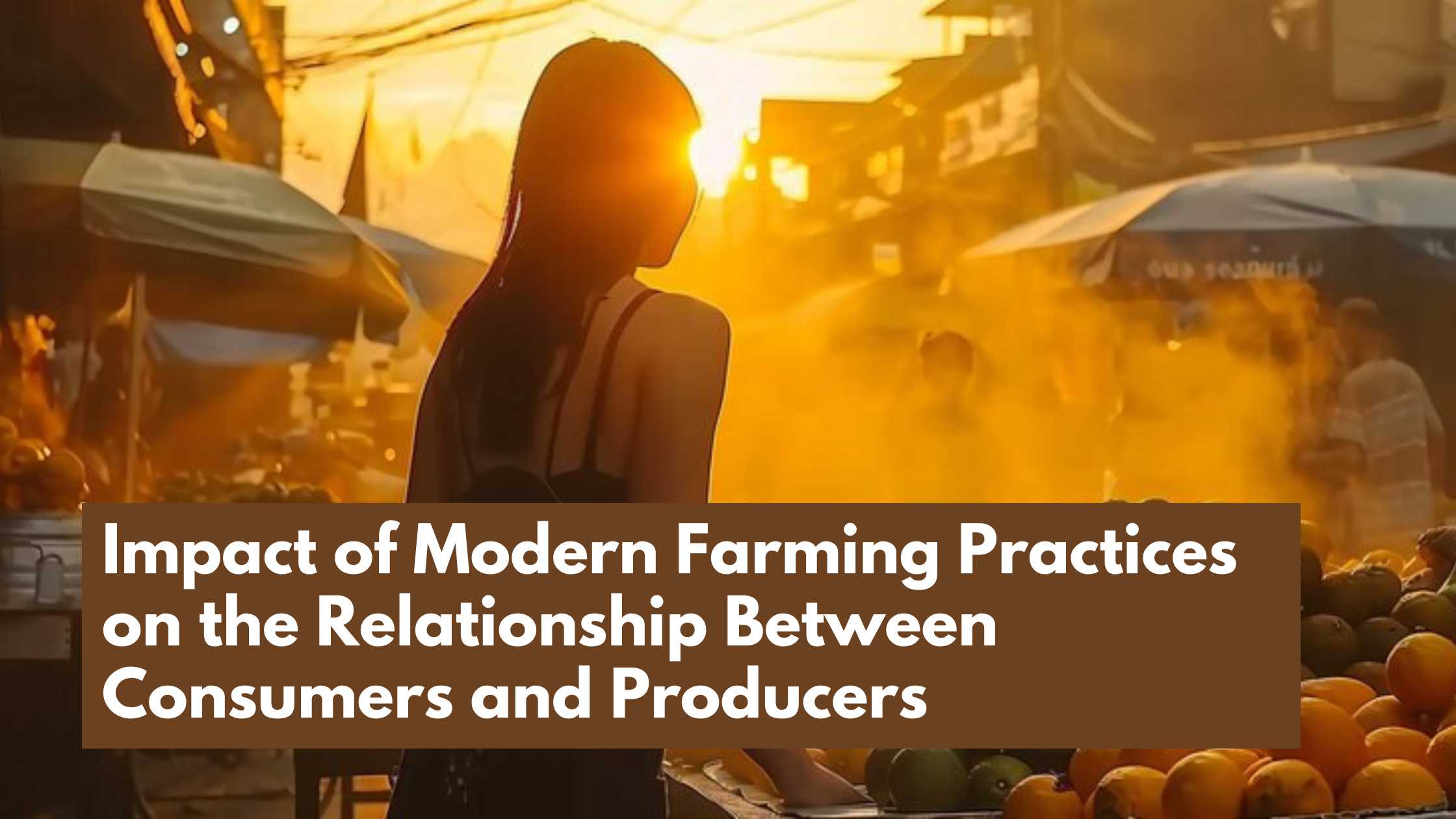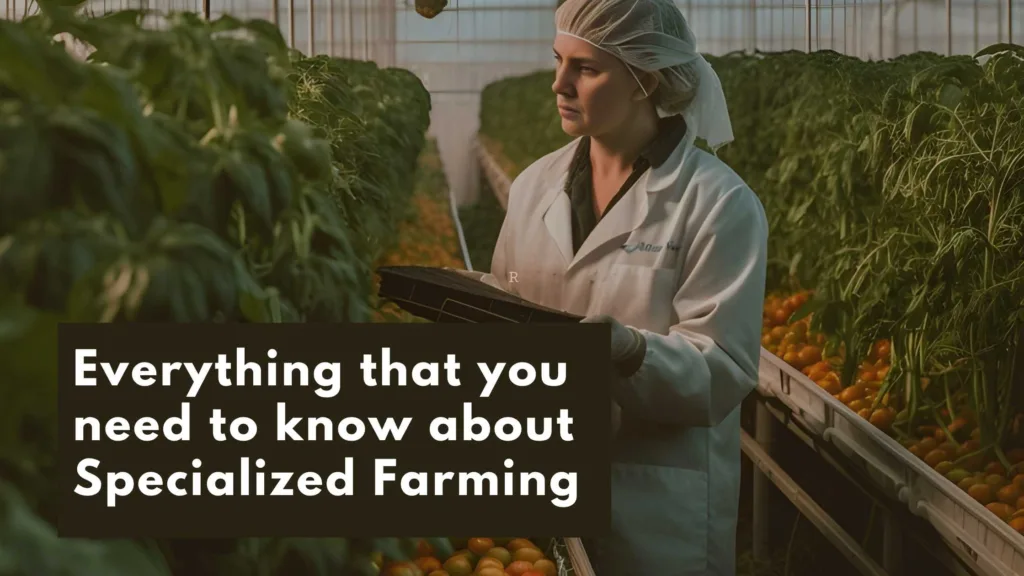The demands of the global market, shifting consumer preferences, and technological improvements have all contributed to a dramatic alteration of the agricultural environment in recent decades. In addition to completely changing how food is produced, Modern Farming Practices have changed the dynamic between farmers and customers. This blog explores the complex ways that contemporary agricultural techniques have affected this important relationship, looking at how technology, sustainability programs, and direct-to-consumer business models have impacted interactions between those who raise our food and those who consume it.
Technological Advancements in Modern Farming Practices
One of the most notable aspects of contemporary farming is incorporating technology into every step of the process. Through drones and GPS to monitor and manage crop health in precision agriculture and automated machinery for planting, harvesting, and processing, growers may now maximize production and efficiency while reducing their environmental effects. These developments have improved farming practices but have also impacted consumers by guaranteeing a more dependable and steady food supply.
Furthermore, the progress in biotechnology has resulted in genetically engineered crops that provide advantages like heightened resilience against pests and illnesses, enhanced nutritional value, and elevated yields. These developments have the potential to address issues with food security. Still, they have also spurred discussions about sustainability, safety, and ethics, which has affected how consumers view contemporary farming methods.
Sustainability Initiatives

Sustainability has become a critical component of contemporary agriculture as concerns about environmental challenges, including soil erosion, water scarcity, and climate change, become more widely recognized. Farmers employ cover crops, crop rotation, and conservation tillage to enhance soil health, lower greenhouse gas emissions, and preserve natural resources. Additionally, farmers are lowering their carbon footprint and switching to more sustainable agricultural practices thanks to adopting alternative energy sources like solar panels and wind turbines.
When choosing foods, consumers are placing a higher priority on sustainability, which is creating a growing demand for items made with eco-friendly methods. As a result of this movement in customer preferences, producers are adopting sustainable agricultural methods and pursuing certifications like organic or regenerative agriculture, fostering a greater match between consumer ideals and producer practices.
Direct-to-Consumer Models
Social media and e-commerce platforms have made direct-to-consumer methods more popular, which has changed how farmers interact with customers. Producers can sell directly to customers through online marketplaces, subscription services, and community-supported agriculture (CSA) initiatives. This allows them to circumvent traditional distribution channels and establish more transparent supply chains.
Direct-to-consumer business methods allow customers to interact directly with the farmers who raise their food and give them access to fresh, locally sourced goods. Customers can ask questions, share their thoughts, and learn about the farming methods employed thanks to this direct relationship that promotes transparency and trust. Producers can adjust their goods based on valuable insights into consumer tastes, more significant profits, and more control over pricing when they sell directly to consumers.
Modern Farming Practices: Challenges and Opportunities
Modern farming practices have revolutionized agriculture, increasing productivity and efficiency. However, these advancements come with their own set of challenges and opportunities. Balancing sustainability, technology, and economic feasibility is crucial for the future of farming.
Challenges
Food Safety Concerns:
- A growing number of consumers are worried about the safety of their food, including matters like pesticide residues, the use of antibiotics in cattle, and foodborne illnesses.
- To ensure food safety, Strict adherence to hygienic guidelines, appropriate handling and storage procedures, and routine production process monitoring are necessary.
Environmental Sustainability:
- Deforestation, water pollution, and soil deterioration are just a few of the adverse effects that contemporary farming methods can have on the environment.
- To address these difficulties, Reducing chemical inputs and implementing sustainable farming practices like organic farming, conservation tillage, and agroforestry are necessary.
Animal Welfare:
- Consumers are becoming increasingly concerned about the moral implications of how animals are treated in agriculture, including confinement, overcrowding, and the use of hormones and antibiotics.
- Producers are under pressure to raise the bar for animal welfare, adopt humane handling procedures, and grant access to outdoor areas and natural behaviours.
Regulatory Complexity:
- Producers face difficulties adhering to many regulatory frameworks, such as labor rules, environmental regulations, and food safety standards.
- Navigating these rules takes a lot of time, money, and experience, especially for small-scale and family-run farms.
Market Volatility:
- Changes in consumer demand, input prices, and commodity prices may expose producers to financial risk, impacting their profitability.
- Long-term success requires developing measures to mitigate market volatility, such as diversifying crops, entering new markets, and implementing risk management tools.
Technological Barriers:
- Producers may need help embracing and using new technologies, particularly those who live in rural or underdeveloped areas with inadequate resources and infrastructure.
- Investments in infrastructure development, education, and training are necessary to overcome technological barriers, and business and governmental players must also provide their assistance.
Opportunities:
Transparency and Traceability:
- Promoting transparency throughout the food supply chain, from farm to fork, can enhance consumer confidence and trust.
- Traceability systems and labelling initiatives strengthen the bond between producers and customers, allowing customers to make more informed decisions about the products they buy.
Investment in Research and Development (R&D):
- Innovation, increased productivity, sustainability, and resilience in agriculture depend on research and development (R&D) spending.
- Innovation in the public, corporate, and academic domains can create novel technologies, methodologies, and goods that tackle new prospects and problems.
Dialogue and Collaboration:
- Producers, consumers, legislators, and other stakeholders must engage in dialogue and collaboration to address common issues and devise win-win solutions.
- Community forums, internet forums, and farmer’s markets are platforms that encourage meaningful exchange of ideas and interactions.
Adoption of Sustainable Practices:
- Using techniques like organic farming, regenerative agriculture, and agroecology can increase soil health, reduce climate change, and promote environmental stewardship.
- To attract ethical customers, producers can set themselves apart from the competition in the market by emphasizing their dedication to sustainability and social responsibility.
Value-Added Opportunities:
- Investigating value-added options can boost the competitiveness of agricultural businesses and generate new revenue streams. Examples include organic certification, fair trade alliances, and agritourism experiences.
- By diversifying their product offerings and marketing approaches, Producers can reach niche markets and adapt to changing consumer tastes.
Modern farming methods do, however, come with a number of difficulties, but they also offer opportunities for creativity, teamwork, and progress. Stakeholders may collaborate to create a more resilient and equitable food system by addressing issues with food safety, environmental sustainability, and animal welfare and by taking advantage of possibilities for investment, communication, and transparency.
Conclusion
Modern farming’s consumer-producer dynamic is radically changing due to technological breakthroughs, sustainability programs, and direct-to-consumer business models. Even if these modifications come with difficulties, they also give us chances to build a food system that is more open, robust, and sustainable. Producers and consumers can influence agriculture’s future and guarantee everyone access to wholesome, safe food.
Harisharan Devgan, a pioneer in organic and sustainable farming, exemplifies how modern farming practices can be both innovative and environmentally friendly. His commitment to eco-friendly agriculture and technological advancements in farming serves as an inspiration for farmers worldwide, proving that sustainability and productivity can go hand in hand.



